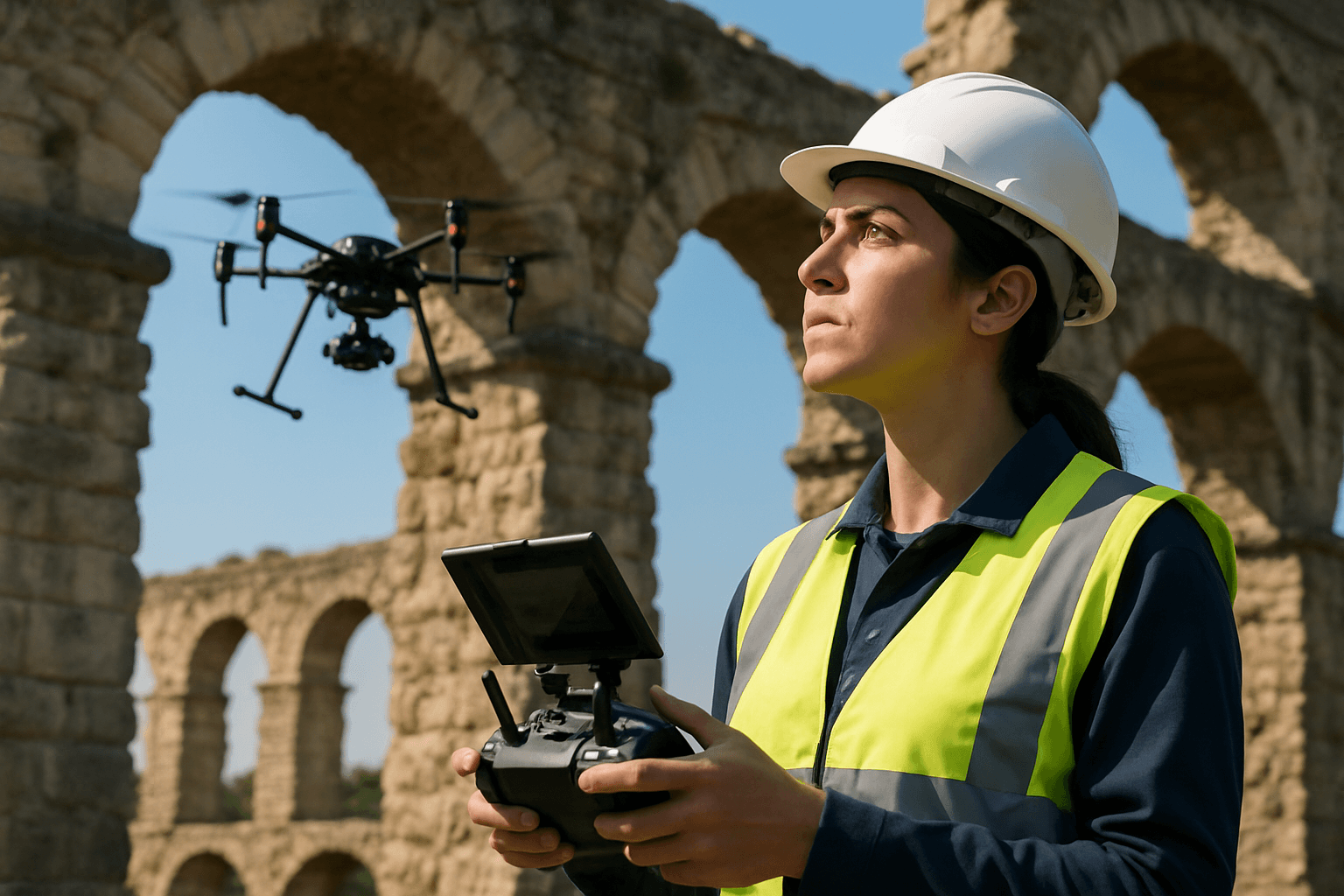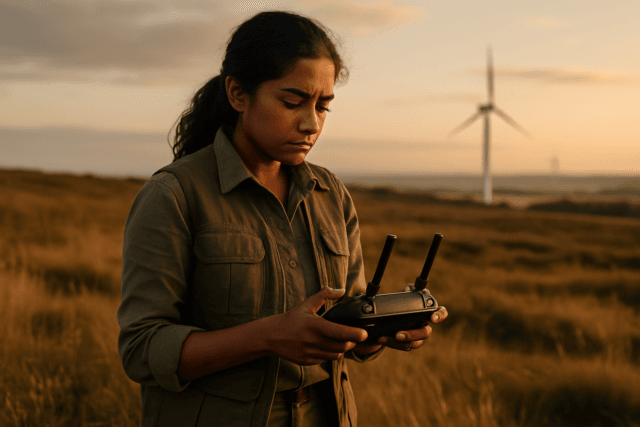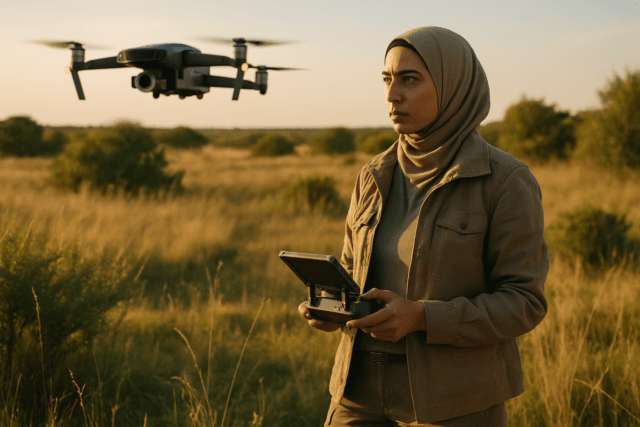The world’s historical infrastructure, from ancient castles and cathedrals to historic bridges and monuments, represents invaluable cultural heritage. Inspecting and maintaining these delicate structures has traditionally been a formidable challenge, often involving costly scaffolding, hazardous manual climbs, and time-consuming processes that can inadvertently risk the integrity of the site itself. However, a new era of preservation is dawning with the advent of drone technology, offering a safer, more efficient, and incredibly precise solution for assessing these irreplaceable landmarks.
The Inherent Challenges of Traditional Historical Site Inspection
Historically, evaluating the condition of towering spires, intricate facades, and expansive roofs on historical buildings demanded extensive resources. Scaffolding could take weeks or months to erect and dismantle, posing potential risks to both workers and the fragile historical fabric. Accessing hard-to-reach areas often meant putting human inspectors in dangerous situations, while the data collected was frequently limited in scope and accuracy. This laborious approach often led to infrequent inspections, potentially missing early signs of deterioration that could escalate into significant damage.
The Transformative Benefits of Drone Technology in Heritage Preservation
Drones, or Unmanned Aerial Vehicles (UAVs), are fundamentally changing the landscape of cultural heritage inspection by addressing many of these long-standing challenges.
Enhanced Safety and Accessibility
One of the most significant advantages of using drones is the drastic improvement in safety. Drones eliminate the need for human inspectors to physically access dangerous or difficult-to-reach areas such as high roofs, fragile turrets, or confined spaces. This reduces the risk of accidents and injuries, protecting personnel and minimizing potential damage to the historical structures themselves. Specialized drones, such as the X500 research drone, can even navigate challenging underground environments with low light and obstacles, expanding accessibility to archaeological heritage.
Cost and Time Efficiency
Traditional inspection methods are often expensive and time-consuming. Erecting scaffolding for a comprehensive building survey can cost millions and take months. Drones, by contrast, offer rapid deployment and can cover vast areas in a fraction of the time, leading to substantial cost savings. This efficiency allows for more frequent monitoring, enabling early detection of issues and proactive maintenance, which further prevents costly major repairs down the line.
High-Resolution Data and 3D Modeling
Drones equipped with advanced sensors capture high-resolution images and videos, providing incredibly detailed visual data. This data can then be processed using photogrammetry software (such as Structure-from-Motion, or SfM) to generate precise 3D models, often referred to as “digital twins,” of the historical sites. These digital replicas allow experts to virtually inspect every minute detail from the comfort of an office, track changes over time, and plan restoration efforts with remarkable precision. For example, 3D models were crucial in assessing the damage and planning the restoration of Notre-Dame Cathedral after the 2019 fire.
Non-Invasive Documentation
For delicate and fragile historical sites, any physical contact carries a risk of damage. Drones provide a non-invasive method of inspection, capturing all necessary data without physically touching the structure. This is particularly vital for preserving the original fabric of ancient monuments and buildings.
Advanced Sensor Capabilities
Beyond standard high-resolution cameras, drones can carry a variety of specialized sensors to uncover hidden issues:
- Thermal Imaging: Detects moisture ingress, insulation failures, and heat loss, which can indicate structural problems invisible to the naked eye.
- Multispectral Imaging: Gathers data across different light spectrums, useful for analyzing material composition or detecting subtle changes in vegetation at archaeological sites.
- LiDAR (Light Detection and Ranging): Uses laser pulses to create highly detailed three-dimensional maps, even penetrating dense vegetation to reveal hidden structures or precisely measure surface deformation. This technology is invaluable for archaeologists in uncovering intricate details that traditional methods often miss.
Key Technologies Driving Drone Inspection in Cultural Heritage
The effectiveness of drone inspection stems from a combination of sophisticated hardware and software.
Drone Types and Platforms
Both rotary-wing (multirotor) and fixed-wing drones are employed. Rotary-wing drones are ideal for detailed inspections of buildings due to their ability to hover and operate in confined spaces, often carrying heavier payloads like advanced sensors. Fixed-wing drones are better suited for surveying larger landscapes, such as archaeological sites, due to their longer flight times and faster speeds. Autonomous drones, like those developed by Fly4Future, can navigate complex historic interiors even without GPS, performing highly accurate obstacle avoidance.
Sensor Payloads
The “eyes and ears” of the drone are its sensors. High-resolution DSLR cameras, HD/4K video cameras, thermal imaging cameras, multispectral imaging units, and LiDAR scanners are common payloads, chosen based on the specific inspection requirements. The ability to swap these payloads makes drones highly versatile.
Data Processing Software
Once data is collected, specialized software is used for processing. Structure-from-Motion (SfM) software, such as Pix4D and Agisoft Photoscan, is crucial for converting overlapping still imagery into accurate 3D surface models and point clouds. Artificial intelligence (AI) is also being integrated to analyze these images in real-time, detecting anomalies like cracks, corrosion, or other structural defects, and streamlining data processing.
Challenges and Considerations in Drone Use for Historical Sites
Despite the numerous benefits, the widespread adoption of drones for historical infrastructure inspection faces several important considerations:
Regulatory Compliance and No-Fly Zones
Operating drones requires strict adherence to local and federal aviation regulations. In the US, the FAA mandates remote pilot certification and compliance with guidelines such as flying below 400 feet and maintaining visual line of sight. Many national monuments and historic sites have designated “no-drone zones” due to security concerns or the need to protect visitors and the site’s integrity. Obtaining prior authorization from site managers is often a prerequisite for flying drones at historic locations. Professional drone operators must also submit detailed paperwork, risk assessments, and flight plans for approval.
Expertise and Data Interpretation
While drones collect vast amounts of data, interpreting this data, especially for complex and unique historical structures, requires specialized expertise. Simply capturing images isn’t enough; trained professionals are needed to analyze the data, identify subtle signs of deterioration, and make informed conservation decisions.
Preservation Concerns
Beyond direct physical damage, there are concerns about the potential disturbance drones can cause to visitors, staff, wildlife, and the overall peaceful ambiance of historic sites. Low-noise drones and operating outside visitor hours are strategies to mitigate these impacts. Unauthorized drone flights over scheduled monuments could also be considered a heritage crime.
Technological Limitations
Early drones had limitations like shorter battery life and slower flight speeds, restricting their operational range. While battery technology is improving, continuous power remains a challenge for very large-scale or long-duration inspections. Additionally, GPS-reliant drones can struggle in environments with signal interference or in completely enclosed spaces, although advancements in autonomous navigation (vision-based, rather than GPS-based) are overcoming these hurdles.
Case Studies and Real-World Applications
Drones are already making a significant impact on the preservation of historical infrastructure worldwide:
- Notre-Dame Cathedral Fire Assessment: Following the devastating fire, drones were instrumental in rapidly assessing the extent of damage and creating 3D models to guide restoration efforts.
- Archaeological Research: Drones are used for exploring vast areas, locating historical objects underground, surveying archaeological sites and landscapes, and creating 3D documentation of excavations. Thermal imaging has even helped uncover hidden features at sites, with one instance revealing over 40% more features than previously known.
- Historic Building Condition Monitoring: Organizations like Historic England and Stirling City Heritage Trust regularly use drones for inspecting traditional buildings, including roofs, gutters, and chimneys, detecting issues like moisture, vegetation buildup, and cracks.
- Digital Archiving and Restoration Planning: The detailed 3D models created by drones serve as invaluable digital archives for historical documentation, guiding future restoration projects and enabling long-term monitoring of structural changes. Case studies include the Frederick, MD Bell Tower and Burden Iron Works Museum, which have been digitally replicated.
The Future of Drones in Cultural Heritage Inspection
The role of drones in inspecting historical infrastructure is poised for even greater expansion. Continued advancements in artificial intelligence will enhance defect detection accuracy and automate data processing, enabling predictive maintenance to identify potential issues before they become major problems. The development of more robust autonomous flight systems, capable of navigating increasingly complex and GPS-denied environments, will further broaden their applicability. The concept of “swarm drones,” where multiple UAVs work collaboratively to inspect large structures, promises even greater efficiency for large-scale projects.
By embracing these technological marvels, humanity can ensure that its most cherished historical sites are preserved with unprecedented care and precision for generations to come.





